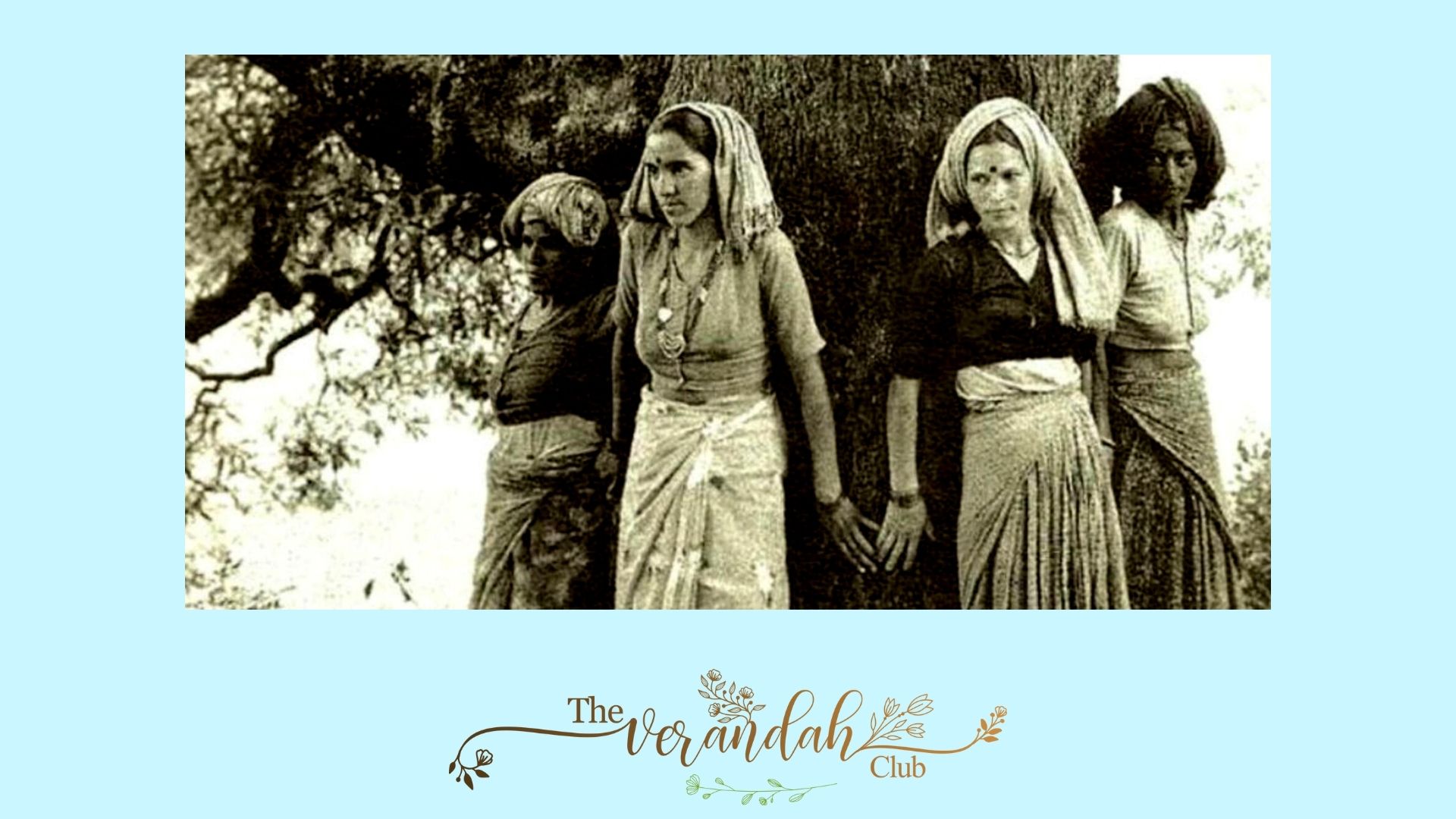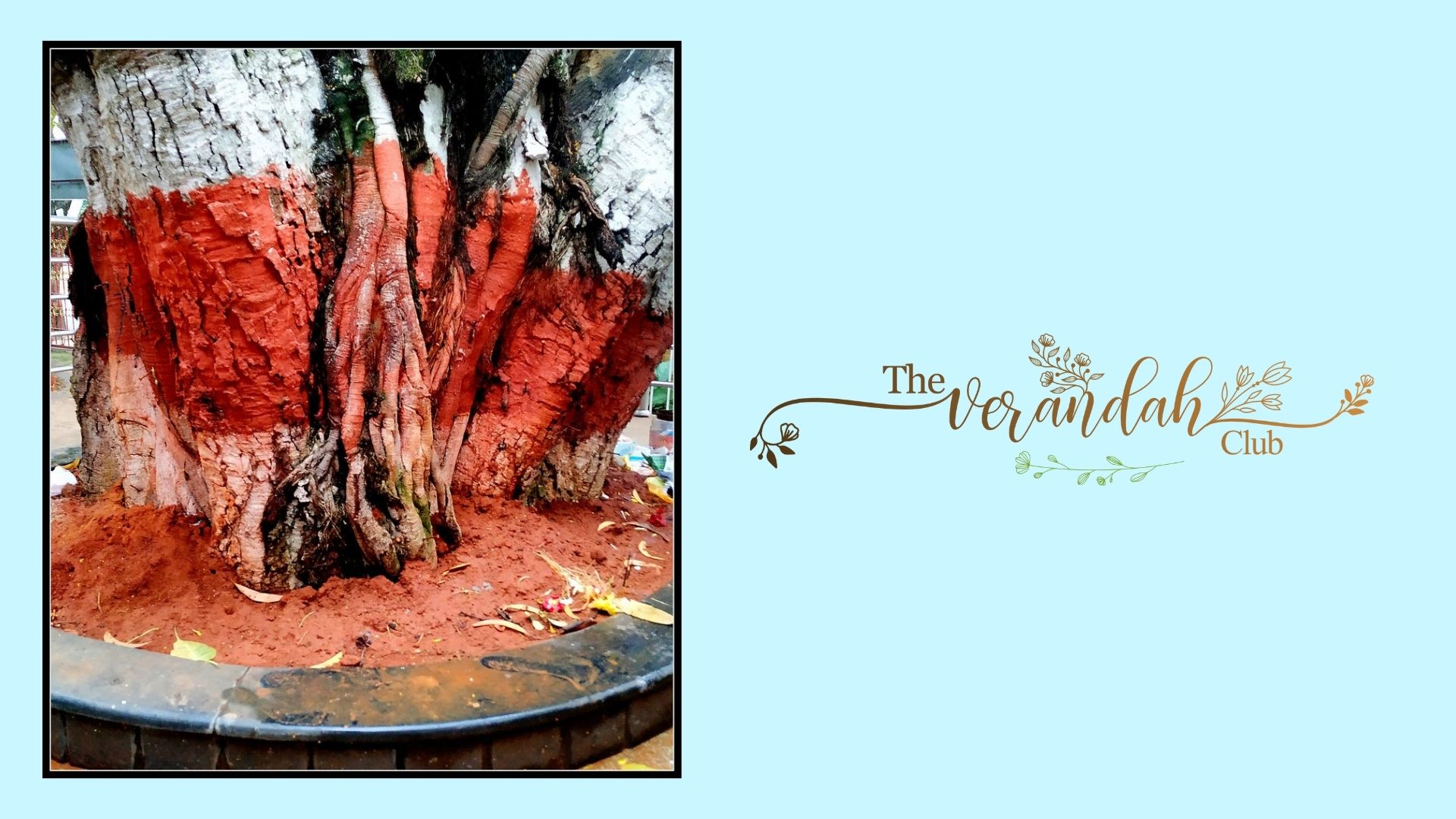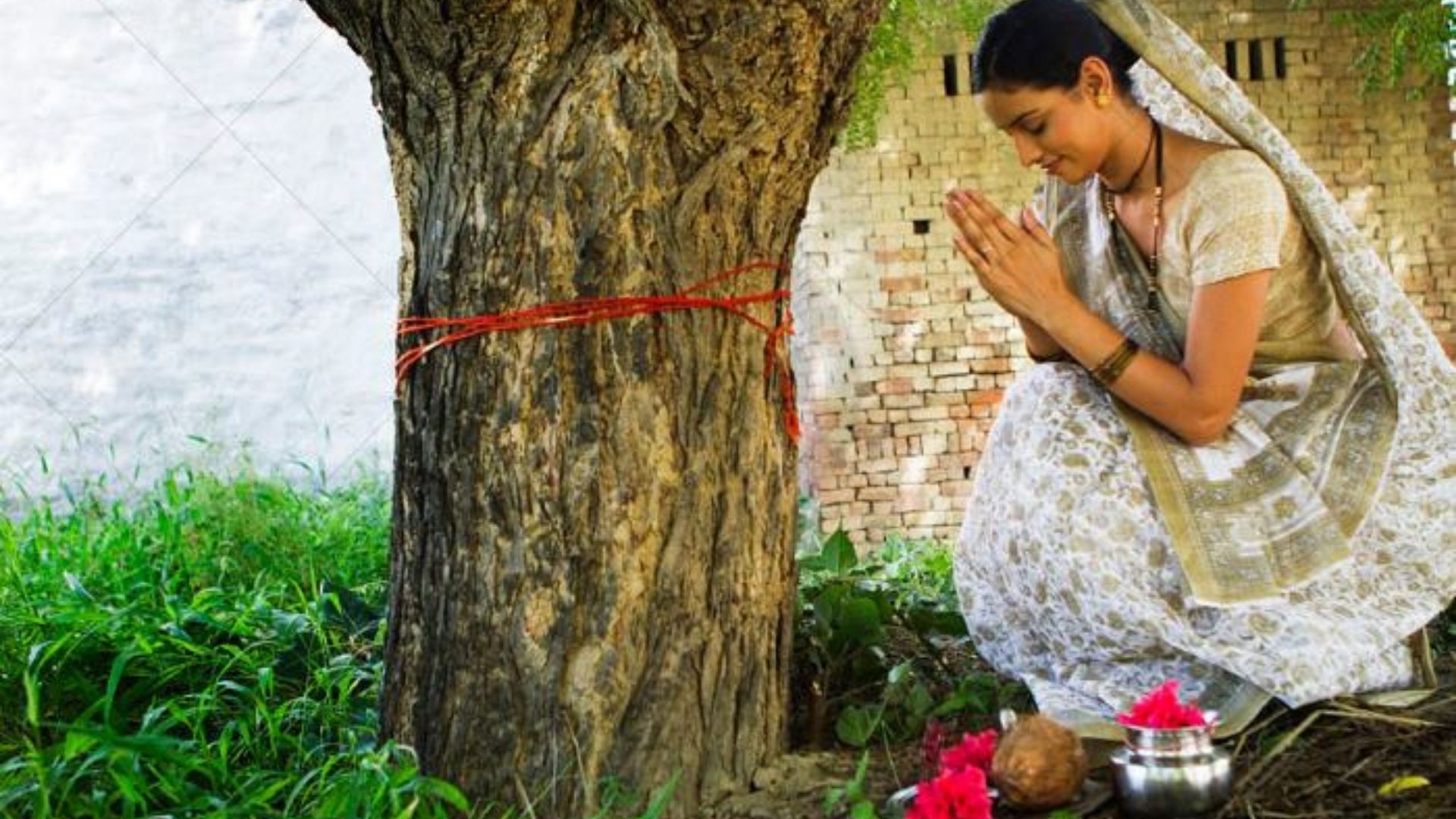Circa 1730, Khejarly Village near Jodhpur became a spot of violent confrontation connected with the protection of trees. Amrita Devi and her three young daughters sacrificed their lives while trying to protect some Khejri Trees. These trees were being cut by Maharaja Abhaysingh in order to build his new palace. The widespread defiance of the locals led to the death of 363 people and all of them were tree-protectors.

This tree is highly regarded by the Hindus and, therefore, was protected. The Chipko Movement of 1973 was born in memory of this sacrifice. Indians revered the tree and would always compensate while chopping one. Trees have been part of the religious and spiritual ecosystem of India. Every South Indian temple had their own trees, and these temple trees were revered. The temple trees would be decorated with turmeric, vermilion and flowers. Devotees would hang cradles, bells, and ribbons to the trees in order to thank the wish-fulfilling tree.
Trees were known as Kalpa Taru-s or Kalpaka Vriksham-s. The Ficus Religiosa is known as the Peepal tree, Arasa Maram or Ashwatha Vrksham. Trees were the eternal guardians of humanity. They provided shade, oxygen, and enriched the topsoil with their leaves. Ground water kept increasing through the presence of trees. No wonder the trees were held sacred. Tree planting was considered a religious duty.
Sages and mendicants would meditate under trees and the positive energy that was emitted by the trees made them stay hale and healthy. Every festival connected with temples ensured the wellbeing of the trees found within the temple. Dead trees would be replaced by fresh ones. Lord Ganesha is known for living under the trees. He continues to live under the Arasa Maram and Vanni Maram.
Women were known to circumambulate the Ganesha under a tree in order to beget healthy offspring. The icons of Lakshmi and Narayana are also placed under the Arasa Maram (Peepal Tree). It would just be enough to leave the tree and the deity all alone. Building an enclosure tends to damage a tree. The ancient Hindus believed in preserving the natural order and we should emulate their ways. The Vilwa Tree is considered to be the representative of Lakshmi. Trees are planted in the memorial spots connected with great souls.

Nerur, near Karur, is known for being associated with the memory of Sadhashiva Brahmendra. A Vilwam tree and a shrine at Nerur continue to attract the devout who are keen to realize. Similarly, there are several saints who are associated with trees. One such saint happens to be the famous Jitamitra Theertha. He does not have a vrindavana for him, but he is said to be present in a Gonada Tree (Gum Tree). This place is known as the Jitamitra Gadde, which is 30 to 32 kms from Raichur, Krishna, Bhima River Basin, Shivapura, Shahapur Taluk in Gulbargah District. It is here that he was seen last, and it is believed that he is found in the tree. Therefore, the place is maintained as a monument. The tree is being worshiped by many, even today.
Similarly, the Marudhamalai temple is associated with the marutham trees and therefore the deity is known as Marudhachalamoorthy (Muruga). The Kadamba Tree at Madurai is connected with the Meenakshi Amman Temple and the deity is known as Kadhambhavana Vaasini. An old peepal tree located at the Thiruppulani Aadhi Jagannaatha Perumal Temple is said to be thousands of years old. The Ashwatha Vriksham in this temple happens to be very powerful.
Lakshmi is said to be ever resident in this tree, and childless couples have a bath at the sethu and offer their prayers to Aadhi Jagannatha at Thirupullani (Ramanathapuram, Tamil Nadu, India). They should offer their prayers after doing a naga prathista under this tree. Paal Paayasam (Milk Pudding) is offered and distributed after consumption. The ones doing so will be blessed with healthy children. A devout poet had sung a verse which talks about the benefits that will accrue for the person who is circumambulating this ancient Peepal Tree at Thirupullani.

The wise Indian is therefore aware of the spiritual, religious and ecological benefits of tree worship. This has ensured the protection of the trees and the ecosystem connected with it. It is appropriate to recall that Dhaaru (Neem Tree) is used for the making of the idols of Jagannath, Baladev and Subadhra. Tree worship in India has been very important.
The Atharva Vedha mentions that the Peepal Tree is the abode of Gods. The Savaraa-s inhabiting the deep forest worship the tree. They cut the surplus branches and worship the stem and just two branches. These two branches are meant to represent the hands of the tree deity. A human head is painted on top. The image of Lord Jagannath thus resembles the stem. The Skanda Purana relates to Raja Indhradhyumna, and he is said to have been responsible for the installation of Lord Jagannath at Puri.
An ancient peepal tree is said to be the symbol of the Saraswati Civilization. This is represented in a terracotta tile and the same is said to belong to 2500 B. C. The association of tree worship and the Hindus has been thus present for thousands of years and will hopefully continue to be so.
 Mr. Rajesh Govindarajulu is one of the founding members of the Verandah Club Pvt. Ltd. He is a leading columnist, historian, jeweler, entrepreneur, and a heritage enthusiast who is earnestly working to revive the past in the light of the present. Experiential learning about the history of Coimbatore is his main course of interest and he is also a panel member of many colleges in the city.
Mr. Rajesh Govindarajulu is one of the founding members of the Verandah Club Pvt. Ltd. He is a leading columnist, historian, jeweler, entrepreneur, and a heritage enthusiast who is earnestly working to revive the past in the light of the present. Experiential learning about the history of Coimbatore is his main course of interest and he is also a panel member of many colleges in the city.
NEXT ARTICLE

A group of eager volunteers and nature enthusiasts, gathered amidst the lush greenery, ready to embark on a mission to enhance the beauty of our surro...